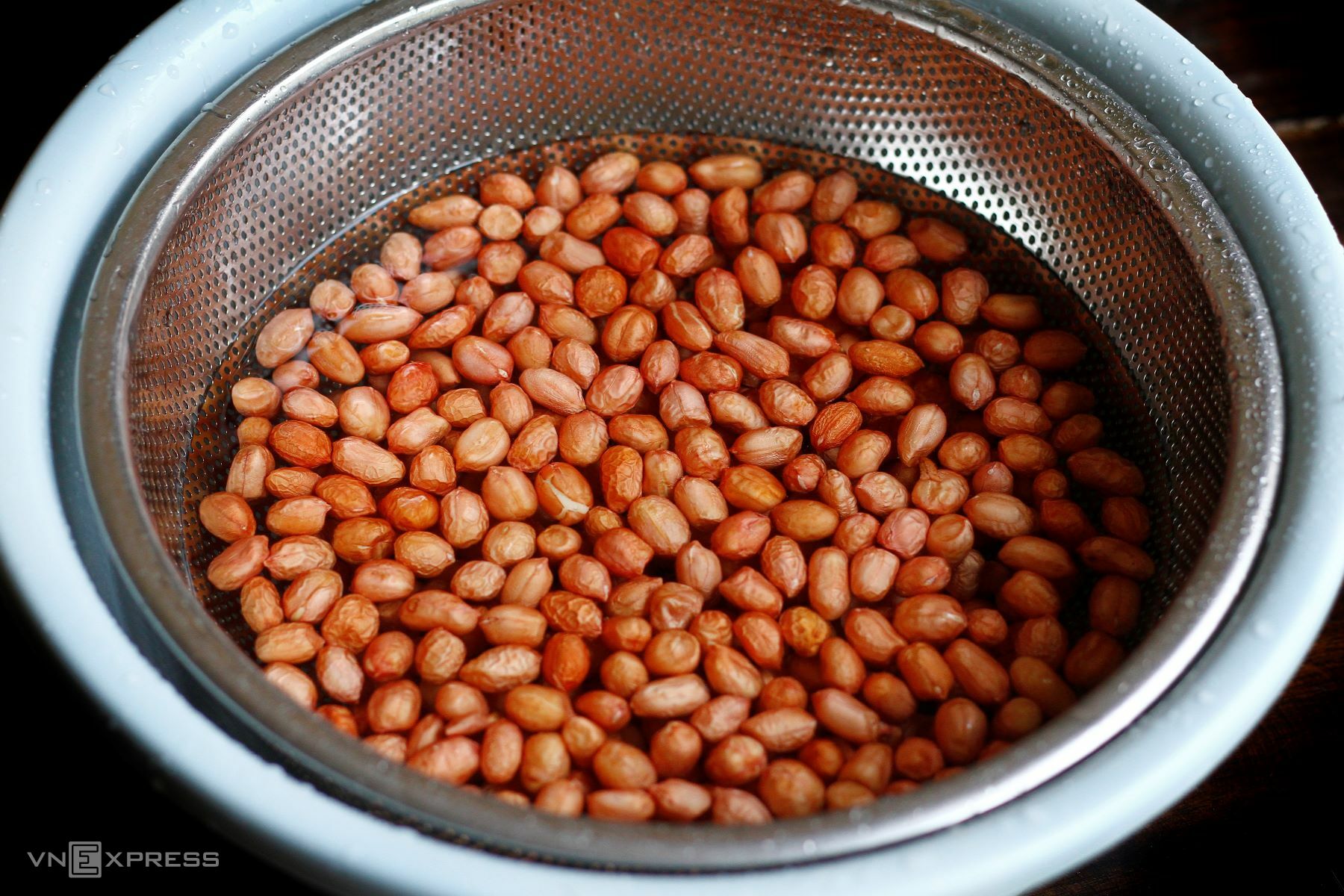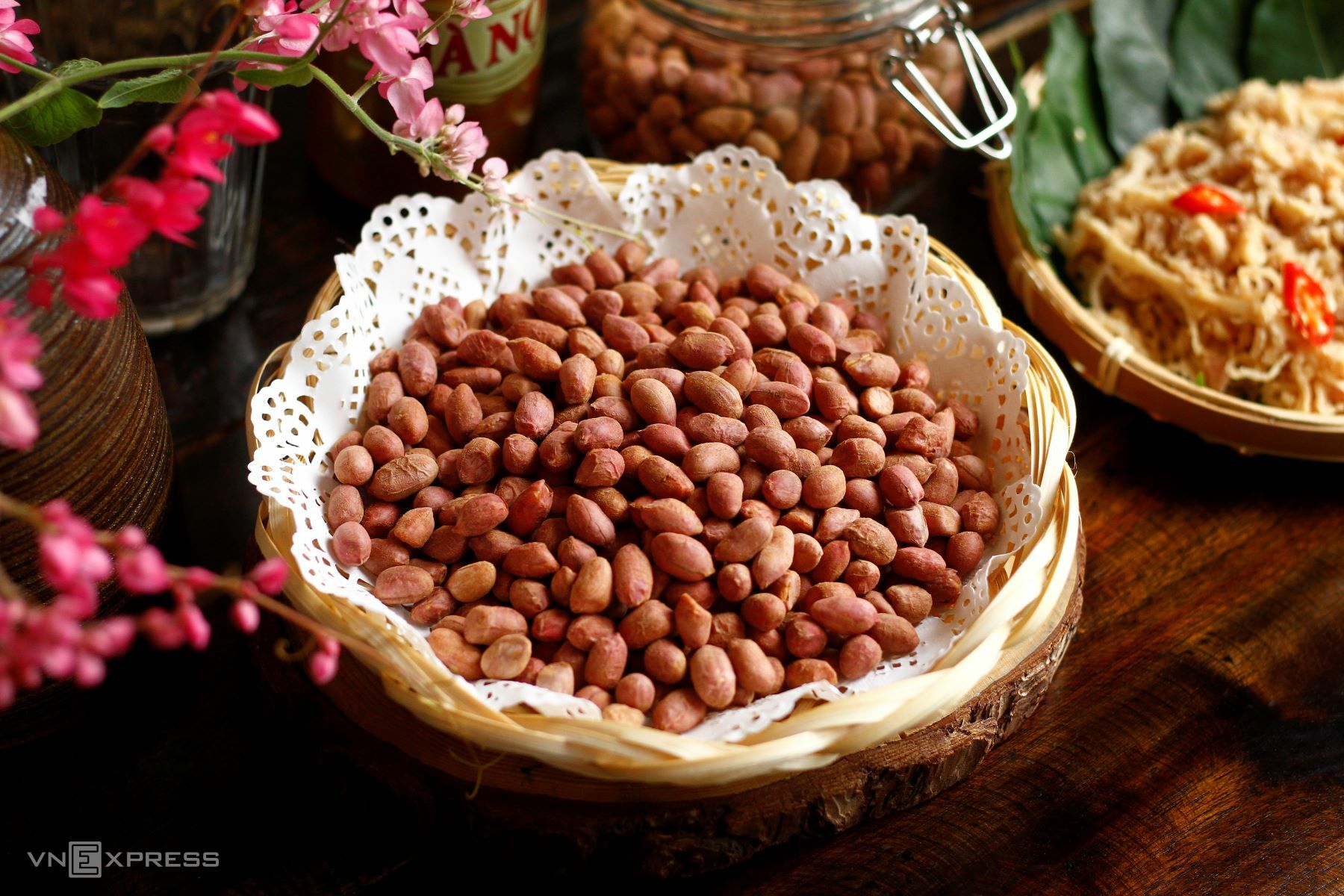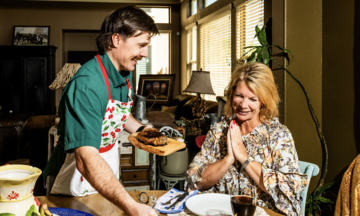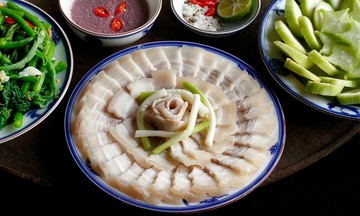Peanuts are rich in protein and lipids. When roasted, the Maillard reaction and caramelization occur, creating their characteristic aroma and golden-brown color. If the peanuts are completely dry, direct heat can scorch the outside before the inside is fully cooked. Conversely, washing peanuts before roasting introduces moisture. This moisture evaporates first, slowing the heating process and allowing heat to distribute evenly.
Even the traditional Hanoi roasted peanuts with lime leaves are washed before roasting, with some families even pouring boiling water over them.
 |
Washing peanuts before roasting ensures they cook evenly and stay crispy longer. |
However, washing peanuts requires the correct method. If the peanuts are too wet, the roasting process takes longer, resulting in a darker shell while the inside remains moist. The evaporating moisture can also cause the peanuts to reabsorb moisture after cooling, making them go stale quickly.
The correct method is to wash the peanuts and then drain them thoroughly, air-drying them with a fan or under mild sunlight. The Hanoi roasted peanuts with lime leaves involve a more elaborate process: sun-drying the peanuts for a few hours to eliminate mustiness and enhance crispness after roasting. If sunlight isn't available, an oven or air fryer can be used for drying.
Another factor that significantly affects crispness is the roasting technique. Initially, medium heat is crucial. High heat scorches the peanuts, while low heat prolongs the process. Once the peanuts are dry, roast them over low heat, stirring constantly for even heat distribution until they crackle. Traditionally, home cooks roasted peanuts with clean, sifted sand over low heat to ensure even cooking.
When using an oven or air fryer, start at 150 degrees for 10 minutes, then reduce to 90-100 degrees for 30-45 minutes, stirring occasionally for even cooking.
After turning off the heat, wrap the roasted peanuts in clean paper or a cloth to absorb moisture and maintain crispness. Avoid leaving them in the pan for too long, as residual heat can make them bitter.
The cooling process is equally important. Place the wrapped peanuts in a well-ventilated area until they cool completely before storing them in an airtight container. Storing warm peanuts in a sealed container traps moisture, leading to staleness.
Compared to roasting dry peanuts, roasting after washing often results in more flavorful and longer-lasting crispness, provided they are properly drained and roasted.
 |
Photo: Bui Thuy |
Industrial peanut processing sometimes employs "moist roasting," where peanuts are coated in a light salt solution before roasting. This ensures even cooking and easy removal of the skin. A US study described a brine method (soaking peanuts in a 10% salt solution) for several hours before roasting. This removes excess moisture while allowing the salt to penetrate the peanuts, resulting in a crispier texture and more balanced flavor compared to dry roasting.
Besides washing, weather and storage conditions also influence crispness. In humid environments, peanuts absorb moisture easily and soften quickly. Therefore, store roasted peanuts in airtight, dry containers, ideally with desiccant packets. Traditionally, Vietnamese home cooks stored roasted peanuts in small jars sealed with dried banana leaves, creating an airtight yet breathable environment that preserved crispness.
Washing peanuts before roasting does not cause them to go stale quickly, contrary to popular belief. In fact, proper draining and roasting techniques enhance crispness and flavor. The key is balance: washing thoroughly, drying completely, roasting over medium heat, stirring constantly, cooling in a well-ventilated area, and storing in an airtight container. These small details distinguish a batch of peanuts that stays crispy for a week from one that loses its appeal soon after cooling.
Bui Thuy












